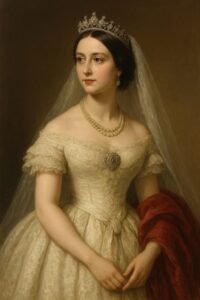Introduction
My Last Duchess is a dramatic monologue produced by Robert Browning. The poem was published in 1842 as a part of dramatic lyrics. Robert Browning is the speaker of the poem and acts as the duke of Ferrara, who lived in the 16th century. My Last Duchess is a narrative poem based on historical events.
Brief Summary of My Last Duchess Poem
The Duke of Ferrara tells the story of his late wife to an emissary who has come to visit the duke’s palace, carrying the marriage proposal from another powerful family. The Duke pulls up the curtain from his last duchess’s portrait and shows the portrait to the emissary. He narrates the story in order to show his earnest feelings for his last duchess. Moreover, he also feels inconvenience for her behavior. The Duke says that whenever someone passed by her, she would feel lecherous and bring a blush to her cheeks.
He further explains that whenever someone presented a gift to her, she would feel joyous and lucky. The Duke unveils his heartaches and says that whenever he passed by her, she did not feel lecherous nor lucky. Besides this, the Duke angrily reveals that she did not value his gift of the nine-hundred-year-old name. As the monologue reaches its last part, the readers and the emissary realize that the duke caused the duchess’s death.
Critical Analysis of the Poem—My Last Duchess
My Last Duchess is a dramatic monologue, which implies that the poem is written as a speech and spoken by one character. The character indirectly reveals his feelings and thoughts to the audiences or listeners. Though the audiences are present, they do not usually have the permission to speak and respond. These types of stories can be called subjective because these stories unveil the author’s intentions and profound feelings.

Setting and context
The dramatic monologue is set in the Italian Renaissance. This was the period known for its great wealth and political interest. The Duke is unveiling the portrait of his deceased wife to an emissary who has come for negotiations about the Duke’s next marriage.
The poem reflects the patriarchal behavior of the Duke of Ferrara. The patriarchal Renaissance society refers to the time when women were not free and they did not have permission to choose their life partners. The Duke’s behavior reflects full possession and control over the last duchess. This was the era where women were treated as a minority and were possessions of their husbands. The poem also reflects its contemporary social culture.
Imagery and language
The poem is rich with the use of imagery. The Duke recollects thoughts and dives into the imagination of his last duchess. The Duke’s tone is used as a metaphor, which implies the dominance of the Duke over his last duchess. E.g., “That is my last Duchess painted on the wall.”
Irony
The Duke pretends to be a gentleman. He presents himself as innocent. However, throughoutthe poem, his language shows his flawed and cruel nature. The Duke tries to win favor of the emissary, for whatever he has done is lawful and not regrettable.
Symbolism
The portrait hanging over the wall displays the symbol of control and love. The preserved portrait symbolizes the love of the Duke for his last Duchess. It shows the patriarchal behavior of control over women. The duke implies wealth, and the duchess implies beauty. This was the period when beauty was engaged through wealth. The wealthy and royal families would love beauty more than human freedom and freedom of movement.
Jealousy
The Duke is unsatisfied due to his last duchess’s behavior. He feels jealous when someone else presents her a gift or when she passes a smile to someone else. The Duke’s jealousy becomes vivid when the Duke says his wife did not value his nine-hundred-year-old name gift. As the following textual lines explain,
“As if she ranked
My gift of a nine-hundred-year-old name
With anybody’s gift.”
Moral Corruption
The Duke does not regret the death of his wife. He does not feel that he was the actual cause of her death. This kind of cruelty and having an arrogant nature describes the moral corruption of the Duke.
Conclusion
My Last Duchess is a remarkable and one of the most celebrated works in English literature. Robert Browning depicts the culture of the Italian Renaissance. The era is a vivid reflection of a male-dominated society where women were treated as servants. Moreover, the poem reveals the harsh nature of wealthy people for women in the patriarchal society. The poem is a reflection of power, moral corruption, and women’s suffering.